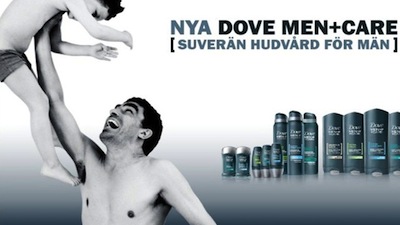Lea Goelnitz, Berlin, Germany, Blog Correspondent
Sexist advertisement is still the norm in many countries, but fortunately there is resistance
Many companies ignore women as potential buyers when they create their advertisement and so use women to sell their products to men. In general most ads are still dominated by very rigid gender stereotypes, therefore it was quite unusual when the jewelry company Tiffany launched an ad that features a gay couple (though it is still aimed at a male audience, featuring two white men).
 Why does this matter? A dialogue comparing German and Swedish ads proves the link between ads and how a society values women and how advanced gender equality is. In the German ad the same product is advertised showing women being stupid, doing chores or being naked, while in Swedish ads men and women are more likely to be portrayed as equal partners or it shows men playing with children. In Sweden, more men go on paternity leave than in Germany and working hours are more adapted to family responsibilities of both partners.
Why does this matter? A dialogue comparing German and Swedish ads proves the link between ads and how a society values women and how advanced gender equality is. In the German ad the same product is advertised showing women being stupid, doing chores or being naked, while in Swedish ads men and women are more likely to be portrayed as equal partners or it shows men playing with children. In Sweden, more men go on paternity leave than in Germany and working hours are more adapted to family responsibilities of both partners.
 In various countries there is now a movement for more gender equality and more diversity to be reflected in advertisement. One example is Pink Stinks in the UK, which regularly names and shames companies that use limiting and damaging stereotypes or even violence. In the U.S. the Representation Project runs a #NotBuyingIt campaign that is particularly active around Super Bowl weekend.
In various countries there is now a movement for more gender equality and more diversity to be reflected in advertisement. One example is Pink Stinks in the UK, which regularly names and shames companies that use limiting and damaging stereotypes or even violence. In the U.S. the Representation Project runs a #NotBuyingIt campaign that is particularly active around Super Bowl weekend.
In Germany, we actually have a so-called advertisement council, which is supposed to intervene in case of discriminatory and offensive ads. But most of the time complaints about sexist ads are rejected because they are deemed as being “humorous” and “entertaining.” As the official council for advertising seems to be unwilling to actually influence ads for the better, new regional/ city ad council were founded across the country.
In Berlin, 15 women from various women´s rights projects founded a working group against sexist, discriminatory and misogynist advertisement in 2014. They developed a catalogue of criteria to define sexist ads, which was presented in front of the city senate and subsequently approved. In some areas of Berlin, it is now illegal to put up ads which violate the criteria. The working group also serves as a platform to which people report sexist ads. The aim is to have a dialogue with the companies, which launch the ads and to explain alternatives to their problematic ads. The role model for this initiative is Austria, where the official advertisement council established an elaborate catalogue and intervenes in discriminatory ads.
The aim of the initiative is to sensitize people to sexism in ads and to explain why certain ads are discriminatory. The views on this are diverse. Sexism is defined along a blurry line. “One obstacle is, that often women themselves do not necessarily recognize sexism in an ad, because they internalized sexism and it is accepted in society at large,” Marisa Riah, who is a member of the working group, explained to me. “Sexist advertisement is one form of violence against one group of people and it helps to reinforce stereotypes and prejudice. Consequently ads have a relevant impact on how we portray people and treat each other. Ads influence people and society and it reflects the values of society as well”, says Marisa about her motivation to be part of the project.
It is still a long way to go, but there is progress. With this initiative, Friedrichshain-Kreuzberg in Berlin, follows other cities in Germany, which managed to establish sexist-ads-free areas just in the past years.
Lea works in journalism and women´s rights and is involved in the women´s rights NGO Discover Football, which uses football as a tool for empowerment and gender equality. Follow her on Twitter, @LeaGoelnitz.
